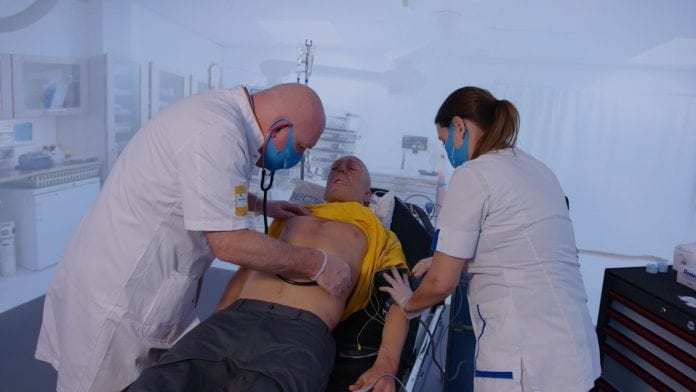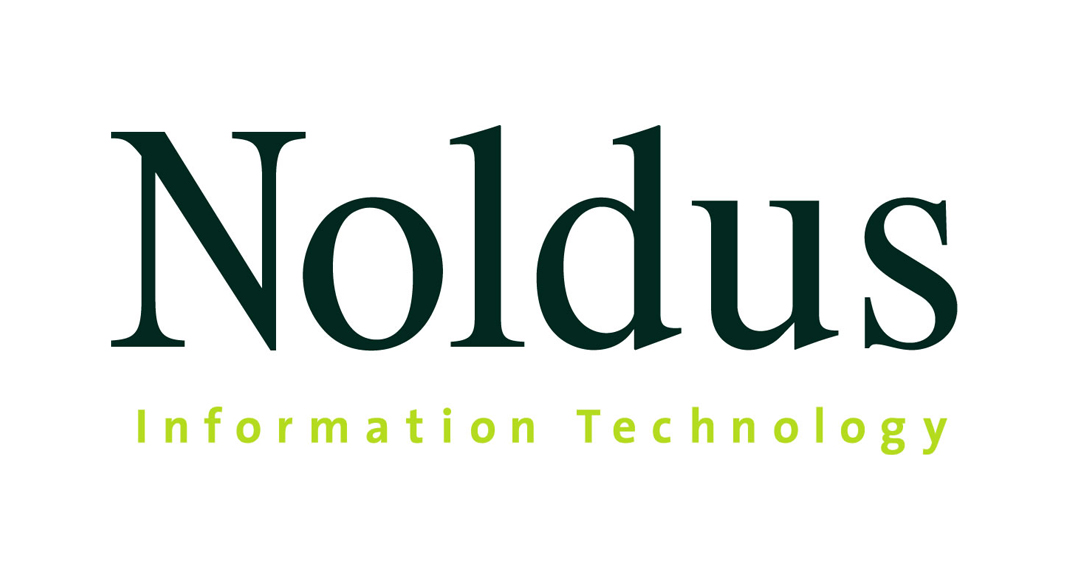
Simulation-based training is an important part of the development and learning process of knowledge and skills. For example, a pilot learns to fly in a simulator instead of an actual airplane first, and initially, in healthcare a nurse trains with help of a manikin.
A well-constructed simulation-based training allows trainees to answer the question, “If I do this, what happens?” It provides them with an opportunity to test out different scenarios to see what works and to understand how they arrived at the right and wrong answers. This trial-and-error approach gives trainees the knowledge and confidence they need to apply their new skills in the real world.
The value of simulation-based training is further enhanced by following up with a debriefing and coaching session. With the help of video recordings, the training sessions can be analysed, errors identified, successes marked, and emotions or feelings that influenced the trainees can be discussed. This is when the real learning takes place.
Five reasons why simulation-based training in healthcare works
The highest goal for every healthcare worker is to improve the quality of a patient’s life and to ensure patient safety. Simulation-based training can achieve that for the following reasons:
- Practicing in a safe environment
In a simulation facility, preferably in a real clinical area where the staff normally works, you can test new tools and methods, focus on crew resource management (CRM), and develop knowledge, skills, and attitudes in a safe and secure environment. Errors are permitted since no actual patients are put at risk in this situation. Besides, it is important for the trainees to be assured that the simulations are confidential, and that video recordings are private. - Understanding human behaviour
Simulating events show us how we react in real life situations. Since it is not occurring in real life, it enables us to make mistakes without consequences and learn from these mistakes. As such, it can help prevent errors and optimise responses in (critical) situations. For example, noise or other disturbances can be simulated, and can give a good feel for how distraction works. - Improving teamwork
Teamwork includes behaviours such as effective communication, collaboration, team leading, team building, and CRM. Teamwork is not an automatic consequence of placing people together in the same room; it depends on a willingness to co-operate toward shared goals.
In healthcare, shared goals might include maintaining a patient’s health status and avoiding errors. In a simulated environment, teamwork can be studied and significantly improved by training specific teamwork skills. - Providing confidence
Simulation-based training provides an opportunity to apply theory and gain experience in skills or procedures, which provides trainees with the confidence to manage similar real-life scenarios. Confidence is directly linked to competence. For example, the robust communication skills needed when interacting with patients requires being able to handle the situation with confidence. As trainees gain confidence, they are more comfortable in making their own decisions and exerting their autonomy. As well as confidence being essential for an individual, demonstrating confidence is important for the patients who put a lot of trust in healthcare professionals. - Giving insight into trainees’ own behaviour
In a simulation facility, you can record the training sessions on video. The video shows the trainees’ response to a certain situation or another person, and clarifies how unconscious processes work. By expanding the video recording with an eye tracker or data acquisition system to measure eye gaze behaviour or physiological responses of the trainees, even more insight into those unconscious processes can be gained. Immediately after the session, the video recordings can be shown with all other data during debriefing, giving a complete picture.
Organising simulation-based training during COVID-19
Researcher Dieckmann and his team published an article in the journal Advances in Simulation in which they describe the potential of simulation to prepare and improve hospital responses to outbreaks like COVID-19. Practice through simulation can reduce the cognitive load of the staff involved in patient care, thereby helping to reduce errors in times of pressure and exhaustion.
Moreover, findings from such training sessions can help in identifying and shaping learning goals, staff preparedness, improving systems and protocols, and ultimately patient safety. Simulation can be seen as an interventive tool for training and as a diagnostic tool for the analysis of work structures and processes.
According to the authors, simulation can play a role within several layers:
- Educational: the (re) qualification of personnel
For example by focusing on infection prevention for healthcare professionals, dealing with an agitated COVID-19 patient, and ensuring clear leadership and followership roles where needed. - System: understand and optimise workflows, bottlenecks, dependencies
For example by focusing on optimizing the layout and equipment available, testing systems and improving processes, optimising flow of patients, or dealing with the lack of equipment. - Personal: dealing with the emotional strain of the situation
All staff should informally share experiences and consider ways to keep healthy.
Improve responses to COVID-19 by preparing, running, and debriefing simulation sessions
Simulation can be a useful tool in the development of new standard operating procedures and policies needed to respond to crises like COVID-19. Besides preparing and running the simulations, debriefing the sessions is central to learning as well. Debriefing facilitates recall and insight, clarifies learning points, builds trust and self-confidence, and improves (team) performance.
Using a video feedback tool, such as Viso, to create and play back audio and video recordings of the simulation sessions, allows adding feedback with personalised markers. While playing back the recordings during debriefing, participants will realise what happened, discuss marked events, and consequently gain deeper insight. The debriefing can also be used to inform relevant others in and beyond the organisation about the findings.
“Viso is a dedicated debrief programme, the sessions are filmed from different angles and we can go back to certain moments which we can highlight, to make sure everybody can look back at their own performance. That is very worthwhile.”
DENNIE WULTERKENS | SECTA MEDICAL, THE NETHERLANDS
Simulation training on a Paediatric Intensive Care Unit (PICU) of Erasmus MC
At the Child Surgical Intensive Care ward of the Erasmus MC Sophia Children hospital in Rotterdam, the Netherlands, a project was started to improve patient safety. It should lead to less incidents and complications, causing less mortality, morbidity, and a shorter length of stay.
An important condition to achieve this goal was that employees should be aware of the risks and danger of their daily acts. Therefore, the Crew Resource Management (CRM) Training has been implemented, together with scenario training.
What does a scenario training look like?
The two-day basic CRM training at the PICU of the Erasmus MC covers seven topics: information management, communication, stress management, group processes, effective leadership and followers, decision-making, and risk management.
The scenario begins with the nurse starting “the shift” as usual on the ward. Checking appointments about artificial respiration or IVs, checking material around the patient, etc. In the meantime, the trainers simulate an incident, for example an infant crying because of pain, a rapid heart action, or a lowering blood pressure in shock after a bleeding. The nurse can call a doctor or ask another nurse to help and think. The video feedback tool Viso is used to record the scenario and enables other nurses and the trainer to view the session live and annotate events of interest.
A scenario ends after 15-20 minutes, when the predetermined learning points (skills, knowledge, and teamwork) have been achieved. The trainer, doctor, and technician discuss which part should be played back during the debriefing session. Under the guidance of the trainers, the participants evaluate what went right or wrong, what insights they received, and what they would do differently next time.
The Behavioural Research Blog offers even more examples and user cases on simulation-based training. For example, the study of Annemarie Fransen and her team, in which they evaluated the effect on teamwork performance after a simulation-based obstetric team training.
Innovative solutions for simulation-based training and research in healthcare
Allow students an opportunity to put theory into practice in a safe and controlled environment. By adding a variety of data streams to this experience such as physiological data, eye tracking data, or facial expression data, essential information will be available to further understand and explain students’ behaviours. For example, with help of these extra modalities, you can see whether and when the heart rate of a student increases, or whether he or she starts to sweat when a hard decision has to be made. Or maybe the student gets distracted and forgets to keep focusing on the patient and the monitor, missing important cues.
Discover how to advance behavioural research in healthcare in this interactive pdf.
The more realistic the scenario, the higher the immersive feeling of the trainee will be
For years, simulation-based training in healthcare uses mannequins, i.e., fully bodied patient simulators for safe training of technical medical skills. Adding an immersive room to a simulation-based training enhances the lifelike experience even further. By projecting a scene on three surrounding walls, it feels like you are actually in that scene.
For example, that can be in an operating room, but it is also possible to change it into a scenario on the street, at a train station, or in a classroom. The projection is not static; the backgrounds change constantly, i.e. cars passing by, pedestrians crossing the street, and trains departing the station. The experience is complete by adding elements such as smell and temperature.
Transform a team of experts into an expert team
Clearly, the major role of simulation is to educate, train, and provide rehearsal for those preparing for or providing healthcare. Besides, in healthcare, it is not enough to be proficient in just your own individual tasks; one should also be a good team player. Team structures, such as recognising and acknowledging the mistakes of others, co-ordinating work, and compensating for each other ensures that fewer errors are made.
Still, simply installing a team structure does not automatically ensure it will operate effectively. And that is where the added value of simulation-based training becomes clear: it can transform a team of experts into an expert team.
Ready to kick start your training or research?
If you are interested to learn more about innovative tools to kick start your training, education, and research in healthcare, please contact us at your convenience.
References
- https://www.noldus.com/blog/what-is-simulation-training
- Gaba, D.M. (2004). The future vision of simulation in health care. Quality and Safety in Health Care, 13 (Suppl 1): i2–i10. http://dx.doi.org/10.1136/qshc.2004.009878
- Jones, J.; Wilkins, M.; Caird, J.; Kaba, A.; Cheng, A. & Ma, I.W.Y. (2017). An experimental study on the impact of clinical interruptions on simulated trainee performances of central venous catheterization. Advances in Simulation, 2 (5). https://doi.org/10.1186/s41077-017-0038-1
- Weaver, S.J.; Dy, S.M.; Rosen, M.A. (2014). Team training in healthcare: a narrative synthesis of the literature. BMJ Quality & Safety, 23, 359-372. https://doi.org/10.1136/bmjqs-2013-001848
- Wang, Z.; Liu, Q. & Wang, H. (2013). Medical simulation-based education improves medicos’ clinical skills. Journal of Biomedical Research, 27 (2), 81–84. https://doi.org/10.7555/JBR.27.20120131
- https://www.noldus.com/blog/simulation-training-improving-response-coronavirus
- Dieckmann,P.; Torgeirsen, K.; Qvindesland, S.A.; Thomas, L.; Bushell, V. & Ersdal, H.L. (2020). The use of simulation to prepare and improve responses to infectious disease outbreaks like COVID-19: practical tips and resources from Norway, Denmark, and the UK. Advances in Simulation, 5 (3), https://doi.org/10.1186/s41077-020-00121-5
- Lecture of Karin Kuiper during the webinar ‘Simulation-based training: Why and how’


























